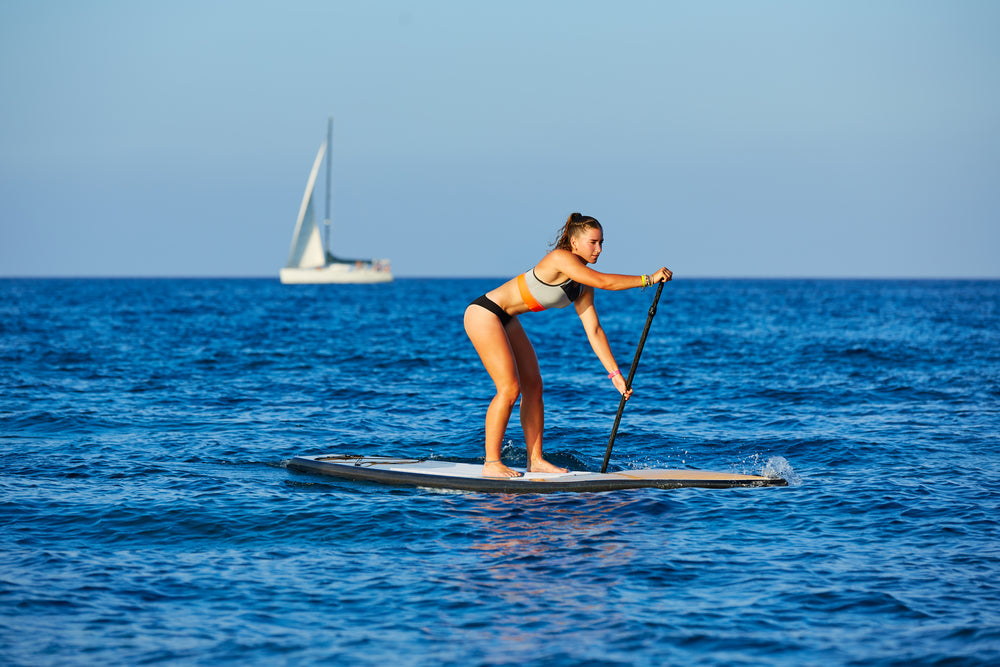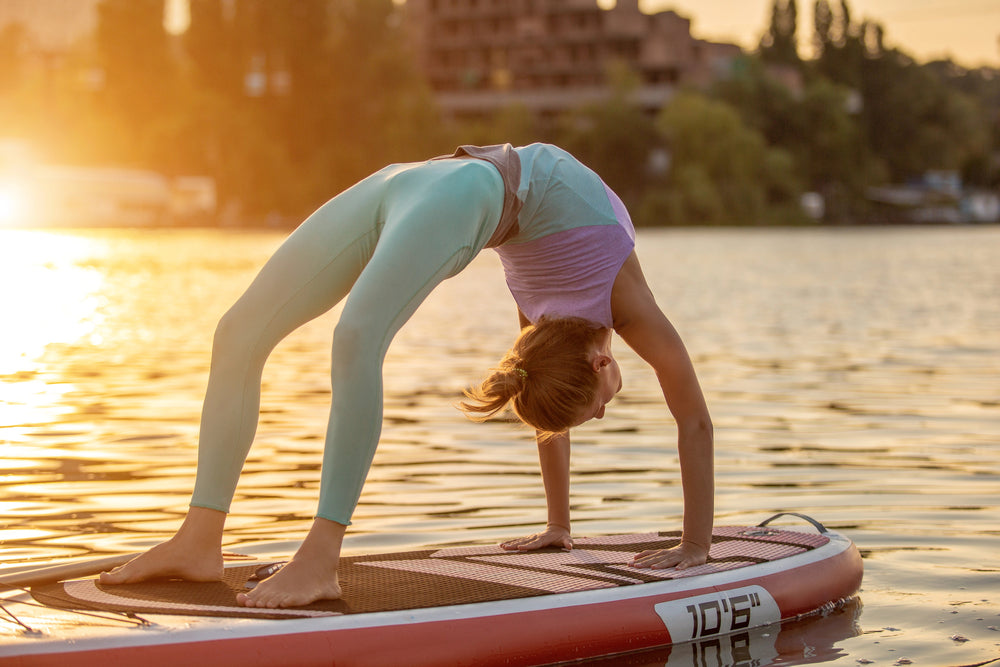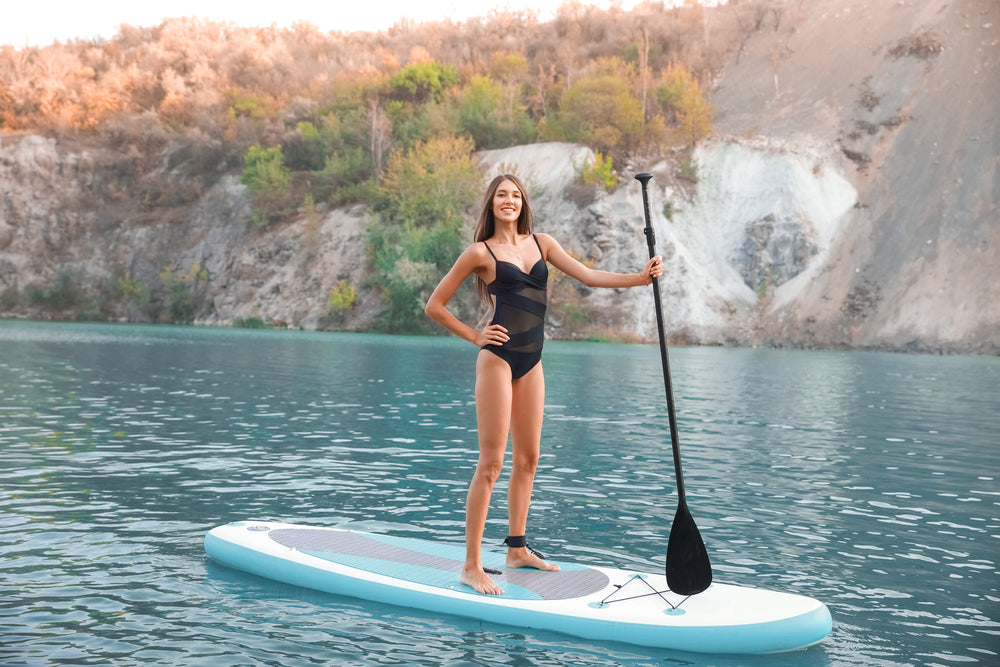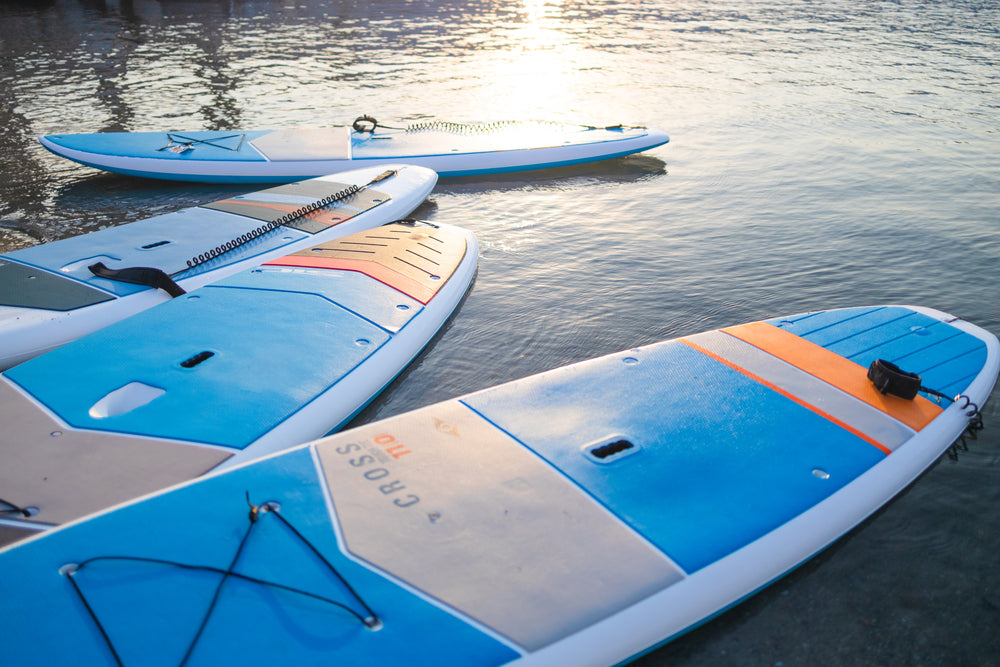4 Tips & Tricks For Perfecting Your Paddle Boarding Technique

Perfecting your paddle boarding technique is akin to learning a new language; it opens up worlds of possibilities. Whether you're skimming across glassy lakes or navigating the challenging currents of a lively river, the right technique forms the backbone of your paddle boarding adventure. It's not just about strength but efficiency, balance, and understanding the water beneath you.
At Dax Board Company, our all-around paddle boards are crafted bearing in mind both the novice learner and the seasoned paddler. These boards bring a balance of stability, agility, and durability, providing a solid foundation to enhance your technique. Whether it's your first time standing up on a board or you're looking to level up your skills, our selection promises a seamless integration with the water, making every stroke count.
Perfect Your Paddle Grip and Stroke
A firm paddle grip is the cornerstone of effective paddle boarding. Your top hand should push down on the paddle's handle, while the other hand pulls the blade through the water. Align your hands with your shoulders to avoid strain and promote power. This grip lets you paddle with strength and minimizes unwanted drag.
The stroke—the heart of your propulsion—starts as the paddle enters the water near the front of the board. Pull it back in a straight line towards your ankle, then lift and return for the next stroke. Keep your movements smooth and steady. A well-executed stroke propels the board forward without wasted energy.
Optimize Your Stance for Stability
Your stance on the board affects stability and agility. Stand with your feet parallel, a bit wider than shoulder-width, centered between the board's edges. This stance offers a solid base for all other movements. Keep your knees slightly bent to absorb waves and wake.
In turbulent water or when changing speed, adjusting your stance maintains balance. Shift your weight by bending deeper into your knees or moving your feet. With practice, these subtle changes become second nature, allowing for swift adaptations to the water's mood.
Master Turning Techniques
Turning—a vital skill for direction change—relies on two main techniques: the sweep and cross-bow. For the sweep, plant your paddle at the board's side and carve a wide arc toward the tail, which swings the nose in the opposite direction. This is great for broad turns or navigating around obstacles.
The cross-bow turn requires you to place the paddle on the opposite side of the board and draw it in a bow-like motion. This quick, sharp action is ideal for tight turns. Mastering these techniques means you can handle unexpected situations efficiently, keeping you safe and in control.
Practice Balance Exercises
To master balance, integrate exercises that mimic the board's motion on the water. Use a balance board or practice standing on a cushioned surface, focusing on weight distribution and core strength. Perform squats, lunges, and single-leg balance moves to build muscles useful for paddle boarding.
Balance training off the water pays off once you're afloat. With stronger balance, it's easier to stay upright in rough conditions. Plus, a solid core supports every stroke, allowing for a smoother ride. Regular practice leads to fewer falls, more confidence, and ultimately, more enjoyable outings on your board.
Equip Yourself with the Right Paddle Board Accessories
No paddler's toolkit is complete without the essential paddle board accessories that complement skill with convenience and safety. From adjustable paddles that cater to your height and stroke preference to safety leashes that keep you tethered to your board, these accessories are designed to enhance your paddling technique. Visit our store today! Our range also includes waterproof carriers to protect your essentials, ensuring nothing holds you back from achieving perfect harmony with the waters.


